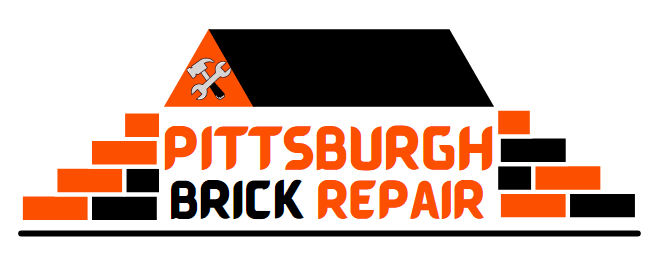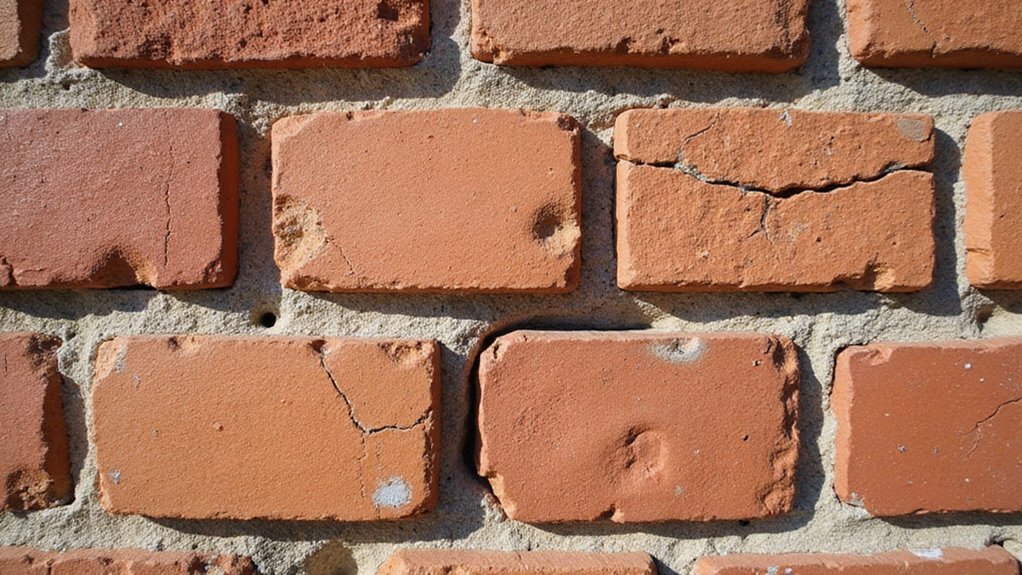Have you ever watched your brick walls slowly deteriorate, wondering how to protect your home’s most vulnerable exterior? Water, temperature shifts, and environmental stress can silently damage masonry, creating expensive repair nightmares. But what if you could shield your brickwork with a simple, strategic solution? Understanding how professional brick sealing prevents future damage isn’t just smart—it’s essential for maintaining your property’s structural integrity and appearance.
Understanding Brick Vulnerability to Environmental Damage
Nature’s elements can be unforgiving when it comes to brick deterioration. Your brick’s porous nature makes it vulnerable to moisture, temperature changes, and environmental stress. Its thermal behavior means it readily absorbs and transfers heat and cold, which can cause microscopic cracks and structural weakening over time. Foundation repair specialists recommend addressing brick vulnerabilities early to prevent costly structural damage caused by environmental wear.
Weather cycles, from freezing winters to scorching summers, gradually break down brick’s integrity. Water penetration, especially, can lead to serious damage through freeze-thaw cycles. Understanding these vulnerabilities helps you take proactive steps to safeguard your brick structures, preserving their strength and appearance for years to come.
Types of Brick Sealants and Their Unique Properties
Because protecting your brick surfaces requires the appropriate sealant, understanding the various types becomes essential for long-term preservation. Different brick sealant compositions offer unique protective qualities that shield your walls from moisture, stains, and environmental damage.
Silane and siloxane-based sealants penetrate deeply, creating invisible barriers that won’t change your brick’s natural appearance. Acrylic sealants provide a glossy finish and work well for decorative applications, while breathable sealants prevent trapped moisture that could cause structural issues.
Your brick sealant application method matters as much as the product itself, ensuring complete and even coverage for maximum protection. Tuckpointing experts recommend applying sealants before winter to prevent freeze-thaw damage to masonry structures.
The Science Behind Water Repellent Technology
Four key principles drive modern water repellent technology in brick protection: molecular interaction, surface tension modification, hydrophobic engineering, and long-term durability. You’ll uncover how specialized chemical compositions create barriers against moisture retention, preventing water from penetrating brick surfaces.
These advanced technologies work by altering microscopic surface interactions, effectively causing water to bead and roll away instead of soaking into porous materials. Innovative sealants form invisible protective layers that maintain brick’s natural appearance while dramatically reducing potential water damage risks.
Your investment in understanding these scientific principles can save you costly repairs and preserve your brick structures for years to come.
Step-by-Step Guide to Properly Sealing Brick Surfaces
Understanding the molecular science behind water repellent technology sets the stage for practical application, and sealing brick surfaces requires careful preparation and exact execution.
You’ll want to start by thoroughly cleaning the surface, removing dirt, moss, and loose debris. Choose a high-quality, breathable sealant that preserves your brick’s unique texture while extending its lifespan. Apply the sealant evenly using a low-pressure sprayer or roller, working in small sections and following manufacturer instructions.
Work on a dry, mild day with temperatures between 50-80°F for ideal absorption and protection. Test a small area first to guarantee desired results.
Common Mistakes to Avoid During Brick Sealing
Brick sealing pitfalls can quickly alter a promising home maintenance project into a costly repair nightmare. You’ll want to avoid common errors that compromise your efforts. Improper surface preparation is a critical mistake many homeowners make, leading to uneven sealing and potential moisture penetration.
Rushing the process and not allowing adequate curing time can also destroy your hard work. Skipping thorough cleaning, using the wrong sealer for your specific brick type, and applying product in unsuitable weather conditions are additional missteps. Take your time, research thoroughly, and follow professional guidelines to protect your investment and maintain your brick’s integrity.
Long-Term Benefits of Proactive Brick Protection
Because protecting your brickwork isn’t just a maintenance task, it’s a strategic investment in your property’s longevity, proactive brick sealing offers homeowners substantial long-term advantages. By preventing moisture absorption, you’ll shield your bricks from destructive freeze thaw cycles that can cause cracking and deterioration.
You’ll save money on costly repairs, maintain your property’s aesthetic appeal, and increase its overall market value. Professional sealing creates a protective barrier that strengthens your brickwork, ensuring it remains durable and visually stunning for years to come. Your investment today protects your home’s future.
Cost Analysis: Sealing vs. Potential Repair Expenses
Protecting your brickwork isn’t just about aesthetics—it’s a smart financial decision that can save you significant money in the long run. Cost effective sealing provides a proactive shield against potential structural damage, preventing expensive repairs down the line.
You’ll spend substantially less on preventative maintenance than on major brick restoration. By investing in professional sealing now, you’re fundamentally creating a protective barrier that guards against moisture, cracking, and erosion. Long term savings become evident when you consider the alternative: costly brick replacements and extensive structural repairs that could drain your finances and undermine your home’s integrity.
Maintenance Tips for Sealed Brick Surfaces
Although sealing provides excellent protection, regular maintenance will help your brick surfaces remain in top condition for years to come.
Clean your sealed surfaces every six months using a soft-bristled brush and mild detergent, avoiding harsh chemicals that could compromise the sealant. Inspect the surface annually for signs of wear or damage, and reapply sealant every 3-5 years, depending on exposure and environmental conditions.
Don’t forget to check mortar joints and address any cracks or deterioration promptly. Proper maintenance guarantees your brick surfaces stay beautiful and protected.
Frequently Asked Questions
Will Sealing Brick Change Its Original Color or Aesthetic Appearance?
You’ll protect your brick’s natural appearance preservation while maintaining its visual integrity. Most sealants are clear and won’t alter your brick’s original color or aesthetic charm.
How Often Should I Reapply Sealant to Maintain Brick Protection?
You’ll want to reapply sealant every 5-7 years, but it’s best to schedule a professional inspection annually to assess your brick’s specific maintenance needs and protect your home’s integrity.
Can I Seal Brick Myself or Do I Need Professional Help?
You can DIY brick sealing, but professional proficiency guarantees precise application and improved shielding. Intricate techniques and potential errors make hiring specialists a more secure choice for long-lasting outcomes.
Does Brick Sealing Work on Older or Historically Significant Buildings?
You’ll need specialized techniques for historical buildings, balancing preservation concerns with aesthetic considerations. Professional conservators can help protect delicate brickwork while maintaining the structure’s original character and integrity.
Are Brick Sealants Safe for Exterior Walls Near Gardens or Plants?
You’ll want to choose sealants that minimize water absorption levels and act as natural pest deterrents. Some eco-friendly options won’t harm nearby plants while protecting your home’s exterior walls effectively.

